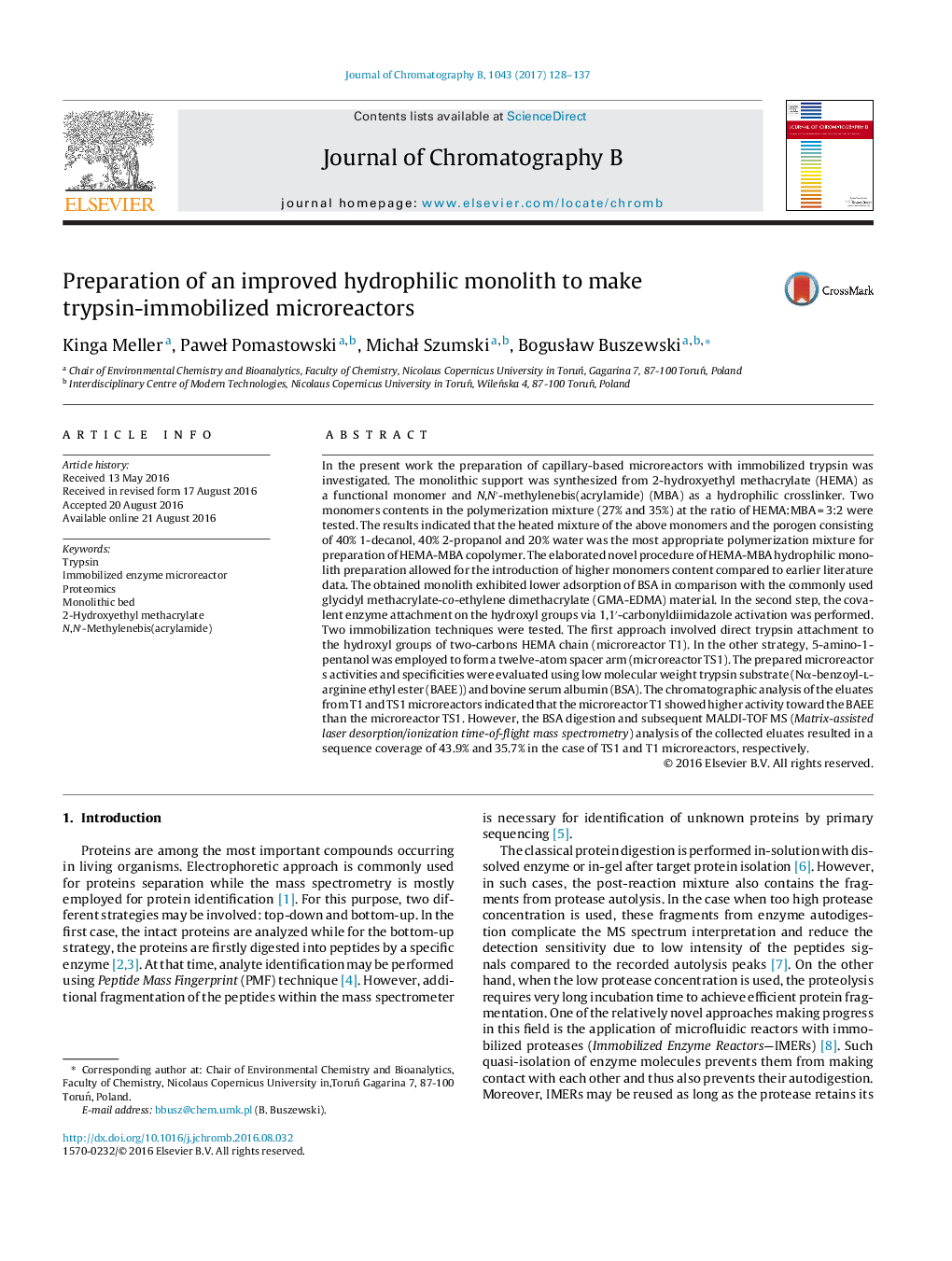| کد مقاله | کد نشریه | سال انتشار | مقاله انگلیسی | نسخه تمام متن |
|---|---|---|---|---|
| 5136791 | 1494017 | 2017 | 10 صفحه PDF | دانلود رایگان |

- Highly hydrophilic HEMA-MBA monoliths prepared with high monomer content reduce protein adsorption.
- HEMA-MBA monoliths with new porogen composition allow high density of functional groups for trypsin immobilization.
- Trypsin-immobilized microreactors show excellent homogeneity across 8Â cm based on hydrolysis activity.
- Trypsin immobilized via spacer arm shows greater digestion ability and specificity then trypsin immobilized directly.
In the present work the preparation of capillary-based microreactors with immobilized trypsin was investigated. The monolithic support was synthesized from 2-hydroxyethyl methacrylate (HEMA) as a functional monomer and N,Nâ²-methylenebis(acrylamide) (MBA) as a hydrophilic crosslinker. Two monomers contents in the polymerization mixture (27% and 35%) at the ratio of HEMA:MBA = 3:2 were tested. The results indicated that the heated mixture of the above monomers and the porogen consisting of 40% 1-decanol, 40% 2-propanol and 20% water was the most appropriate polymerization mixture for preparation of HEMA-MBA copolymer. The elaborated novel procedure of HEMA-MBA hydrophilic monolith preparation allowed for the introduction of higher monomers content compared to earlier literature data. The obtained monolith exhibited lower adsorption of BSA in comparison with the commonly used glycidyl methacrylate-co-ethylene dimethacrylate (GMA-EDMA) material. In the second step, the covalent enzyme attachment on the hydroxyl groups via 1,1â²-carbonyldiimidazole activation was performed. Two immobilization techniques were tested. The first approach involved direct trypsin attachment to the hydroxyl groups of two-carbons HEMA chain (microreactor T1). In the other strategy, 5-amino-1-pentanol was employed to form a twelve-atom spacer arm (microreactor TS1). The prepared microreactor s activities and specificities were evaluated using low molecular weight trypsin substrate (Nα-benzoyl-l-arginine ethyl ester (BAEE)) and bovine serum albumin (BSA). The chromatographic analysis of the eluates from T1 and TS1 microreactors indicated that the microreactor T1 showed higher activity toward the BAEE than the microreactor TS1. However, the BSA digestion and subsequent MALDI-TOF MS (Matrix-assisted laser desorption/ionization time-of-flight mass spectrometry) analysis of the collected eluates resulted in a sequence coverage of 43.9% and 35.7% in the case of TS1 and T1 microreactors, respectively.
Journal: Journal of Chromatography B - Volume 1043, 1 February 2017, Pages 128-137